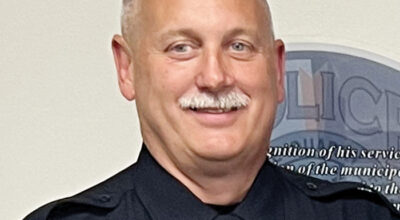City Council sets two-hour comment limit for Monday’s ‘Fame’ meeting
Published 12:00 am Thursday, June 13, 2019
Editor’s note: The city announced Thursday morning the special meeting would now be at the Civic Center, at 315 S. Martin Luther King, Jr. Ave., to accommodate the large crowd expected.
SALISBURY — After a budget workshop Tuesday, Salisbury City Council members ironed out the format for Monday’s special meeting about the Confederate statue “Fame.” They indicated a willingness to schedule a second meeting if a number of residents don’t have the chance to talk.
The meeting will begin at 6 p.m. in the City Council Chambers in City Hal, 217 S. Main St.
Council members agreed to allow as much as two hours for members of the public to speak about the statue and said there would be no discussion among themselves.
“We’re not going to be answering questions or entering any type of a debate with the public,” said Mayor Al Heggins.
“We’re just listening,” Councilwoman Tamara Sheffield said.
“Fame,” which sits on the median of West Innes at Church streets, was vandalized twice in the past year, in March and in August. Both times, the Confederate monument was splashed with paint. The monument is owned by the local chapter of the United Daughters of the Confederacy.
Heggins organized a meeting on May 28 to talk about “Fame” with community stakeholders, including the Salisbury-Rowan NAACP, Salisbury Indivisible and Women for Community Justice. She invited representatives of the United Daughters of the Confederacy and Sons of Confederate Veterans, but they opted not to attend. Mayor Pro Tem David Post and Rowan Museum Executive Director Aaron Kepley also were in attendance.
Previously, Heggins has expressed a willingness to hold a public forum on the topic.
Going into Monday’s meeting, Kepley said he advises the council members to listen and be open to views that oppose their own. He said the special meeting on the Confederate monument is proactive, unlike responses after the Charlottesville, Virginia, protests in August 2018, when white supremacists protested the city’s plans to remove a statue of Confederate Gen. Robert E. Lee.
“Salisbury (residents) can decide what the monument means to them,” Kepley said.
The council will give each person three minutes to speak. Unlike City Council meetings, residents will not be able to yield their time to someone else. There will be no sign-up sheet, and those who wish to talk will line up.
Councilman Brian Miller said it is important to stick to the three-minute limit and to go about things in an efficient manner to allow time for more people to speak.
“Whoever shows up first gets to talk, and if there’s a whole lot more people that didn’t get a chance, we’ll schedule another meeting,” Miller said.
City Attorney Graham Corriher will speak ahead of the public comment and present a memorandum about the city’s authority to relocate the monument. The Salisbury Post received a copy of his memorandum Wednesday.
A portion of it states, “a state law passed in 2015 prevents the city from removing the monument permanently and places strict limits on where and under what circumstances the city may relocate the monument. Even in the absence of that state law, the city’s 1908 resolution granting to the UDC the right to use the site where the monument is located prevents the city from acting contrary to the resolution except where the city is required to act in the interest of public safety.”
It then goes into detail about the background of the statue, which was purchased in 1909, as well as state law and the 1908 resolution.
The council spoke about having Gary Freeze, a history professor at Catawba College, speak as an expert ahead of public comment. It opted to have Freeze speak along others.
Kepley recommended that the council consider tasking a commission to write a history of Rowan County to update it. He said it could be a comprehensive report that compiles the library’s information, Post archives and other artifacts to provide those interested a launching point to look into family or community history.



